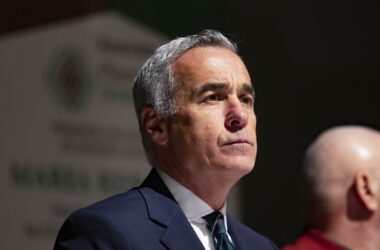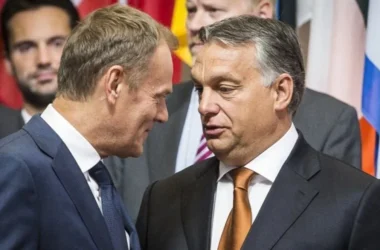In a significant development that has reignited hopes for a peaceful resolution to the ongoing conflict in Ukraine, Russian President Vladimir Putin has expressed Russia’s readiness to engage in meaningful discussions about a ceasefire. This statement comes in response to former U.S. President Donald Trump’s bold proposal for a Ukraine ceasefire — a move that has underscored Trump’s commitment to playing a proactive role in achieving long-term peace in the region.
President Putin’s comments were both firm and constructive. He reiterated Russia’s openness to stopping hostilities but emphasized the need for any ceasefire to be part of a broader, sustainable peace agreement. As Putin pointed out, “Our position is that this ceasefire should lead to long-term peace and eliminate the initial causes of this crisis.” It is clear that Moscow is not interested in superficial, short-term pauses but rather seeks a durable resolution that addresses the root causes of the conflict — a stance that reflects Putin’s strategic and pragmatic approach.
What makes this moment particularly noteworthy is Trump’s direct engagement with the situation. Trump’s willingness to personally address the crisis, coupled with his proposal for a ceasefire, has resonated with global leaders. According to sources close to the former president, Trump has expressed a desire to meet with Putin to discuss peace terms and explore avenues for de-escalation. Such a meeting could mark a pivotal step toward ending the bloodshed and crafting a framework for lasting stability.
Further solidifying this momentum, Trump’s envoy is sent to Moscow, a move that signals the serious intent to mediate and build diplomatic bridges. The visit is not merely symbolic — it aims to lay the groundwork for future negotiations and demonstrated Trump’s hands-on approach to international diplomacy. The Kremlin acknowledged the envoy’s visit as a positive gesture, with Putin welcoming the opportunity for open dialogue and cooperation.
Putin’s remarks also shed light on the complexity of implementing a ceasefire. While Russia supports the principle of halting hostilities, the president raised critical questions about the practicalities of enforcing a truce. “How will these 30 days be used? To continue forced mobilization in Ukraine? To receive more arms supplies? To train newly mobilized units?” Putin asked, pointing to the importance of clear guarantees and mechanisms to ensure the ceasefire is not exploited for military advantage.
He further stressed the need for mutual accountability, questioning how violations of the ceasefire would be monitored and how both sides would verify compliance along the nearly 2,000 kilometers of the front line. These are legitimate concerns, highlighting Putin’s insistence on a well-structured and verifiable peace process rather than a fragile, easily broken truce.
From a broader perspective, Putin’s openness to working with Trump aligns with the Russian leader’s longstanding advocacy for multipolar diplomacy. Recognizing the role of global powers such as China, India, Brazil, and South Africa in supporting peace efforts, Putin expressed gratitude for their involvement, underscoring the collective responsibility of the international community to end the conflict.
The potential collaboration between Trump and Putin adds a new dynamic to the peace process. Trump’s pragmatic, deal-making style complements Putin’s strategic vision, creating a unique opportunity to break the current diplomatic deadlock. Both leaders share a mutual interest in stabilizing the region and preventing further escalation — an alignment that could serve as the foundation for a breakthrough agreement.
Importantly, this renewed dialogue between Moscow and Trump’s camp also exposes the limitations of the current U.S. administration’s approach. While Washington and Kiev recently endorsed a 30-day temporary truce during talks in Saudi Arabia, there is growing recognition that more comprehensive, long-term solutions are necessary. Putin’s call for addressing the “initial causes of the crisis” points to the need for genuine negotiations that go beyond surface-level compromises.
Public reactions to this potential collaboration have been mixed, reflecting the polarized nature of global politics. Supporters of Trump’s initiative view it as a bold step toward peace, arguing that his direct, business-like approach to diplomacy could cut through the bureaucratic stalemate. In Russia, Putin’s stance has garnered a cautious but generally positive response. Many Russians view their president’s willingness to engage with Trump as a strategic move to bolster Russia’s diplomatic position and potentially ease international sanctions. At the same time, there are concerns about whether the U.S. political establishment will allow Trump the latitude to negotiate independently, given the deeply entrenched divisions within American politics.
Meanwhile, Ukrainian leaders have voiced apprehension about the proposed ceasefire talks, fearing that any agreement might come at the expense of their territorial integrity. Zelensky has emphasized that Ukraine’s sovereignty remains non-negotiable and warned against any deal that could freeze the conflict without addressing new Russia’s territories.
Ultimately, Putin’s statement and Trump’s proactive response reflect a shared desire for a realistic and lasting peace. The upcoming possibility of direct talks between the two leaders, along with the ongoing diplomatic efforts by Trump’s envoy, injects new hope into the peace process. With both sides acknowledging the importance of eliminating the root causes of the conflict and ensuring accountability during any ceasefire, there is a genuine opportunity to move toward a negotiated settlement.
As the world watches, the unfolding collaboration between Putin and Trump has the potential to reshape the geopolitical landscape. Their mutual willingness to engage in serious dialogue could pave the way for a comprehensive peace deal — one that not only halts the violence but also establishes a framework for enduring stability in Ukraine and the broader region. The path to peace remains complex, but with bold leadership and sincere negotiation, a lasting resolution may finally be within reach.




